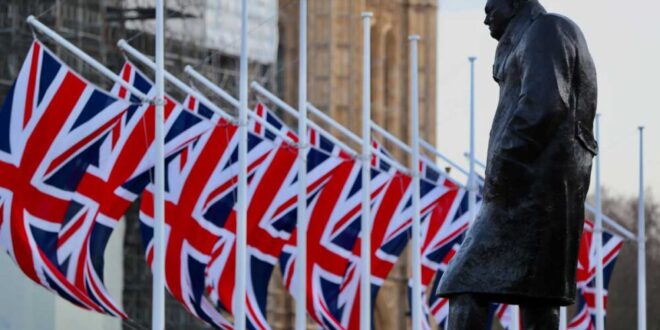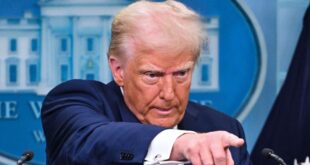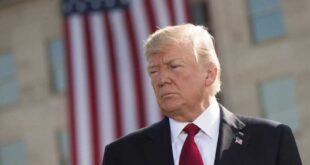Britain’s politico-economic fiasco of the past six weeks culminated in a tragicomic anticlimax. The 45-day Prime Minister Liz Truss resigned, as many had predicted before she even took high office last month. Rishi Sunak, the incumbent Prime Minister (Britain’s third in two months), had vociferously criticized Truss’ flamboyant yet idiotic fiscal plan during the summer run-up campaign to replace Boris Johnson. In hindsight, while she successfully managed to woo the ultra-right Tories with her anti-immigrant and pro-Brexit rhetoric, her inane economic policies failed to enchant the financial markets. And in mere weeks, as Great Britain nudged normalcy after grieving its longest reigning monarch, Truss’ ill-timed tax cuts and brazen borrowing plans wreaked havoc. The British pound tanked to record low; mortgage rates shot to stratospheric levels – forcing the Bank of England (BoE) to intercede to soothe the markets and safeguard the vulnerable pension funds from collapse.
Admittedly, the United States is witnessing relative political stability – at least compared to the Trump tenure. The American economy is heading toward a recession piecemeal. However, the Federal Reserve shows no sign of panic or loss of control. And the investors are patently not losing confidence in the US government, unlike the jitters on display across the Atlantic. Nonetheless, there are a few concerning parallels between the Western duo.
To recap and analyze in-depth, we should first ask ourselves: Why did the British economic plan backfire? It is a well-known fact that Britain is one of the most pivotal Western industrialized economies – 6th largest in the world. Yet an inflationary mini-budget still earned it a rare public rebuke from the International Monetary Fund (IMF) over fiscal imprudence. Such remarks are usually reserved for emerging economies with a notoriety for fiscal irresponsibility. It was not because of the £45 billion in unfunded tax cuts – Britain’s biggest tax package in over five decades. But it was a reaction to the contradiction sketched by the Truss regime between Britain’s conservative monetary policy and quasi-liberal fiscal strategies. The IMF unerringly realized that this tussle would only exacerbate the economic uncertainty already looming in the aftermath of the Russian invasion of Ukraine.
In a period when the Western world alongside the Bank of England (BoE) tightened policy to wrestle with energy-fueled inflation, the British government tabled a plan – sans any independent assessment of potential fiscal impact – to borrow funds to finance utopian tax cuts and eliminate limits on Bankers’ bonuses. In a span when the working class witnessed ballooning energy bills, the Truss government planned to kickstart economic growth via primitive trickle-down economics without any substantive agenda to invite foreign investments.
Naturally, the financial markets revolted by dumping UK debt causing interest rates to spiral; mortgages to skyrocket; pound to drop to almost parity with the US dollar. The new Chancellor of the Exchequer immediately reversed most of her policies before she even egressed the office, while forewarning of painful spending cuts to come. Still, the markets shadowed the announcement of the UK’s next Prime Minister with an ambiguous reaction as sterling slipped 0.17% against the greenback – erasing the earlier gains – while bonds rallied to pre-budget levels.
Thankfully, the United States is not even remotely in the same shoes. But political uncertainty is brewing in the US Congress as well.
The Biden administration has somewhat restored the lost stability totemic to the American political scene. The Make America Great Again (MAGA) tendencies have receded if not completely effaced. And the United States is seemingly back to its classical balance of diplomacy and deterrence that was noticeably missing since 2017. Yet, not all is sunshine in the domestic and international dynamics. The Democrats welcomed this year with a thin majority in both houses. Their mid-term election prospects gradually improved with collective success in Europe against Russia. The Republican blunders like the reversal of Roe v. Wade further favored Biden’s case.
However, the short-sightedness of the Group of Seven’s (G7) ambitious price cap on Russian energy supplies and China’s force posturing in the Indo-Pacific region disillusioned the American patriots. Iran’s bold collusion with Russia by allegedly supplying military drones in Ukraine has further weakened the American illusion of power. The recent slap in the face has been the Saudi betrayal leading OPEC+ to cut global oil supply by 2 million barrels/day, even after Biden bumped fists with crown prince Mohammad Bin Salman (MBS) during his domestically criticized visit to Saudi Arabia in July.
As the gasoline prices have picked up in the last few weeks and inflation is increasingly proving obdurate, the Democrats could lose both houses – or at least the Senate – which could plausibly trigger a Britain-like bedlam. The trigger point is somewhat apparent: The contentious US debt ceiling.
According to the IMF estimates, the US and the UK are two of the most highly industrialized economies running huge deficits in both their budgets and current accounts. According to data from the IMF’s World Economic Outlook (WEO) database, Britain’s current account deficit this year would be about 4.8% of its Gross Domestic Product (GDP); 3.9% for the United States. Both nations have borrowed over 4% of their respective GDPs to fund these gaps. Such huge deficits imply a continual need for capital inflow. Now I admit that advanced economies like Japan and France also run huge government deficits. But no member of the G7 has a deficit on their current account quite like that of Britain and the US register. And while I unequivocally agree that the US treasuries are currently running in the opposite trajectory of UK gilts, a crisis could ensnare the American economy if the Republicans gain control of either of the houses of Congress and enforces a debt limit on government borrowing.
While theoretically, it could push the US government to default on its debt and plunge the global economy into chaos, the more likely outcome is a compromise in the form of spending cuts – a repeat of Obama’s begrudging submission to Republican pressure in 2013 in hopes of a long-term deficit-reduction deal. Nonetheless, this impending political browbeating could spook the already febrile bond markets, courtesy of the aggressive tightening schedule of the Federal Reserve. Remember, investors’ doubt in the British government’s fiscal plan caused the current market meltdown, not any actual sign of imminent default. It illustrates that in the sensitive market environment today, all it takes is market skepticism that gradually snowballs into a formidable economic nightmare – even for an advanced economy.
Another risk is the bustling value of the US dollar. This year alone, the greenback has gained more than 18% against a basket of key currencies, according to the benchmark ICE U.S. Dollar Index. The Fed’s accelerating rate hikes have pushed the dollar to a multi-decade high – even against the currencies of its major trading partners. Consequently, American exports have turned expensive; imports have turned cheaper. Thus, US exports are in line to fall while imports gain, further widening the current account deficit. I fear that a sell-off in the US treasury market could invoke a financial crisis dwarfing the Great Recession of 2008. Fortunately, US securities are a staple for risk-averse investors seeking an economic haven. And virtually every major global transaction – from the oil market to commodities – is settled in the US dollar. Thus, I reckon that the US markets are far more stable than their British counterparts.
Ultimately, the ubiquity of the US economic presence does pose some challenges. The economic pain exported globally by the United States due to a straightening dollar could lead to financial turmoil in one of its major trading partners. Japan is a perfect example. The rate hikes by the Federal Reserve have plummeted the Japanese yen to a 32-year low against the US dollar. Yet the Bank of Japan (BOJ) is persistent in keeping interest rates low to allow its historically moribund inflation to liven up.
My apprehension, however, lies in the perception of inflation. Japan’s inflation of 3% is not demand-driven but imported from abroad, on the back of inflated fuel and food prices. Recent history suggests that Japan would not resort to rate hikes, which would pinch local businesses and dent public sentiment without actually lowering inflation. However, Japan could stop buying or even partly liquidate its immense holdings of US treasury securities totaling about $1.23 trillion to service its staggering debt – circa 260%of its GDP – without cutting public spending. This scenario is just one example of many that could spark a crisis. The frightening reality is that unlike the contained financial debacle of Britain, a panic run in the US capital markets would devastate the global economy. And hence, Britain’s fiscal blunder should be an omen to the US policymakers to address its chronic budget and current account deficits, and mitigate its prohibitive borrowing sprees before it is too late to redress.
 Geostrategic Media Political Commentary, Analysis, Security, Defense
Geostrategic Media Political Commentary, Analysis, Security, Defense





